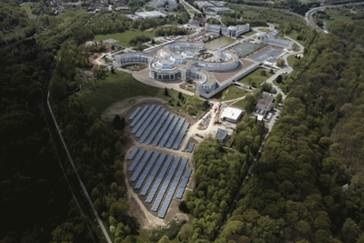A few months ago, Jurgen Krehnke, President and General Manager of SMA America, told Greentech Media, “The SMA microinverter can easily scale above 2 kilowatts. However, we believe microinverters are not cost-effective above this limit. Microinverters are excellent for difficult roof orientations, starter systems, and small applications, but once you get above 2 kilowatts, microinverters are not cost-competitive with leading string inverters, and the performance gains, as shown by independent testing, don’t warrant the extra expenditure required for large systems."
He told us more recently, “It’s commonly known that the cost per watt of solar inverters decreases as you increase in size. This is the basic logic behind SMA’s assumptions about where a microinverter is best utilized. Customers typically will find the lowest acquisition costs utilizing the largest inverters, which is why the cost per watt of a microinverter is higher than an 800-kilowatt central inverter. A decentralized approach for commercial applications makes sense when the maintenance and long-term operation costs begin to outweigh the acquisition cost. In these cases, string inverters can be an attractive solution. Without any appreciable performance gains and a much higher initial cost, however, a microinverter is still not a cost-effective option for most commercial applications."
Krehnke added, "There are instances where a business model dictates use of a particular inverter technology. Microinverters may initially be ideal for new entrants who are more familiar with working with alternating current. Given time, experience and some training, most find that there are simple ways to increase ROI through the use of more mature string and central inverter technology.”
But judging by the sheer number of commercial installations and large sites that Enphase and others have been completing, either Mr. Krehnke is mistaken or Enphase's customers are not being very value-minded. Note that SMA as well as Power-One have introduced their own microinverters in recent months.
Microinverters and panel optimizers can improve energy harvest, simplify installation, and decrease balance-of-system cost. This is the value proposition and the reason why paying more for them can provide other benefits. But central string inverters are mature, proven, and relatively inexpensive.
As an example, Enphase's microinverters were just deployed at a 660-kilowatt solar farm in Wisconsin. Some pictures of the installation are below.
The project was developed and installed by Convergence Energy using almost 2,000 microinverters along with 99 dual-axis trackers from OPEL and DEGERenergie. This installation is unique, as it is an example of a shared solar deployment where Convergence Energy installed solar on land leased to customers who otherwise would be unable to go solar.
According to Enphase's most recent S-1 filing with the SEC:
...in California and according to CSI, based on total wattage of installations, our market share of the...10kW to 100kW small commercial solar PV inverter market has increased from 0% in July 2008 to...19.1%...based on the three month moving averages at the end of September 2011.
Other distributed PV electronics vendors such as eIQ, SolarEdge, and Tigo are also successfully deploying larger projects.
EIQ Energy, with its parallel-DC approach, completed a 1.2-megawatt installation with Granite in Coalinga, California. A spokesperson for the firm suggested it might be the largest installation using distributed power electronics.
SolarEdge has installed a remarkable solar project at the the offices of the French conglomerate Bouygues near Paris. The 1-megawatt ground-mount installation (pictured) is the first stage of a 3-megawatt system. According to VP of Product Strategy, Lior Handelsman, SolarEdge has more than 80 installations worldwide in the 200 kilowatt to 1 megawatt range.
Tigo's distributed MPPT solution is being deployed in a 608-kilowatt combined rooftop and parking lot job that covers 220 parking spaces at the Plantronics headquarters in Santa Cruz (see picture accompanying the article). Jeff Krisa of Tigo said that about 10 percent of the firm's business is in deployments greater than 30 kilowatts, while the company has installed over 50 systems greater than 100 kilowatts, including a 650-kilowatt installation at the offices of Clif Bar. In Krisa's words, "Small commercial has definitely broken through." He added that Tigo has both a 1-megawatt job and a 3-megawatt job in the works. Krisa said that Tigo's average system size is just above 19 kilowatts.
Krisa also claims that the current cost structure of microinverters "doesn't take them beyond 10 or 20 kilowatts."
These warnings that microinverters cannot be of value beyond a few kilowatts by Krisa and Krehnke would seem to fly in the face of the actual installations being done by Enphase. Here are a few examples of large Enphase installs:
• Wonderland Mini Storage, London, ON: 224 kilowatts, 888 microinverters
• Flagship Sun Self Storage, Mashpee, MA: 180 kilowatts, 790 microinverters
• Commercial Retail Store, Wayne, NJ: 344.7 kilowatts, 1512 microinverters
• Corte Madera School, Portola Valley, CA: 166.5 kilowatts, 740 microinverters
Here are a few shots of the Enphase microinverters and trackers at the Convergence Energy site:
Here's a photo of a 180-kilowatt Enphase install:

Here's a 200 kilowatt installation in Trentino, italy on a curved roof using SolarEdge panel electronics.

And here's an image of a 1-megawatt SolarEdge installation.

And two large Tigo installations:
_596_429_80.jpg)



